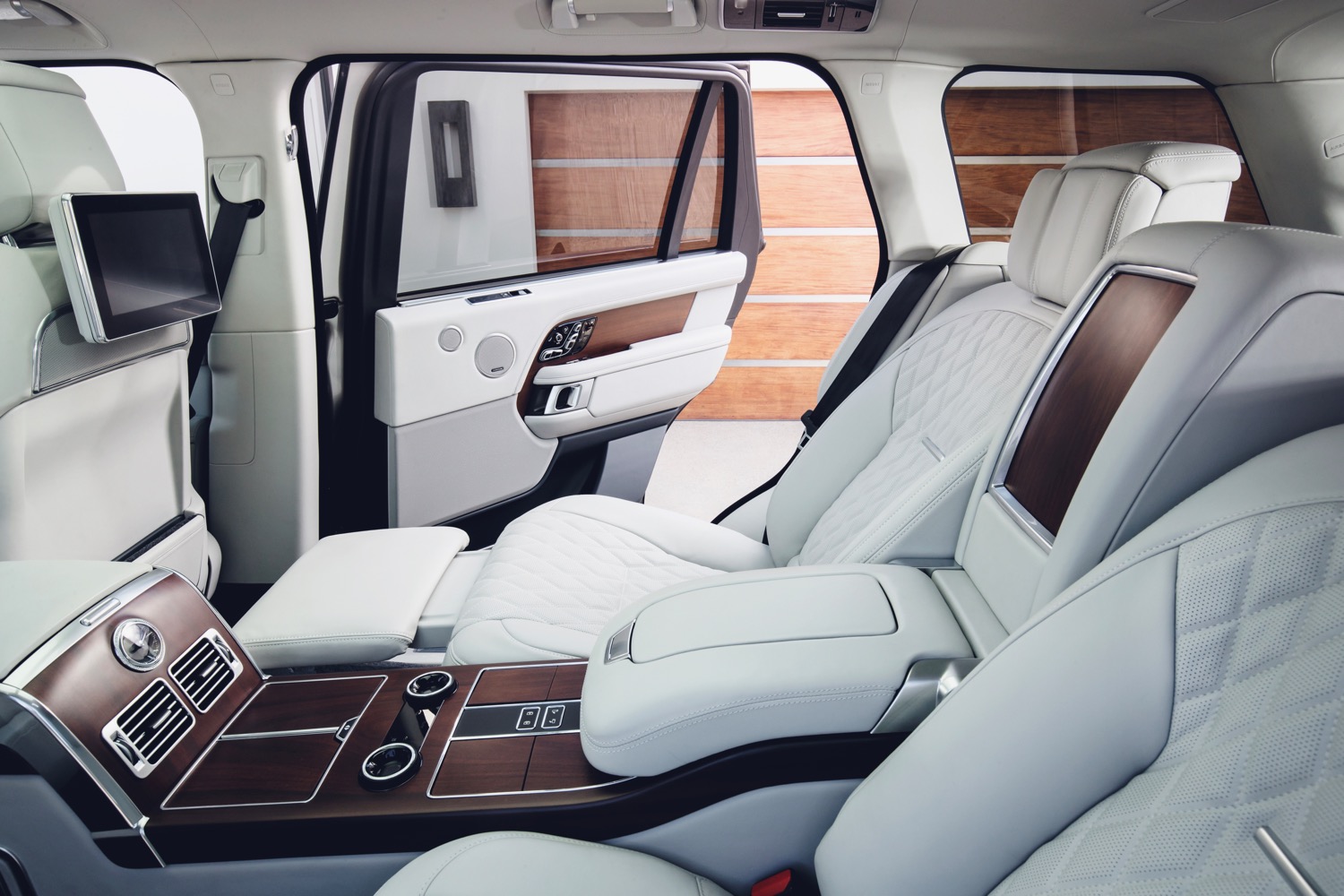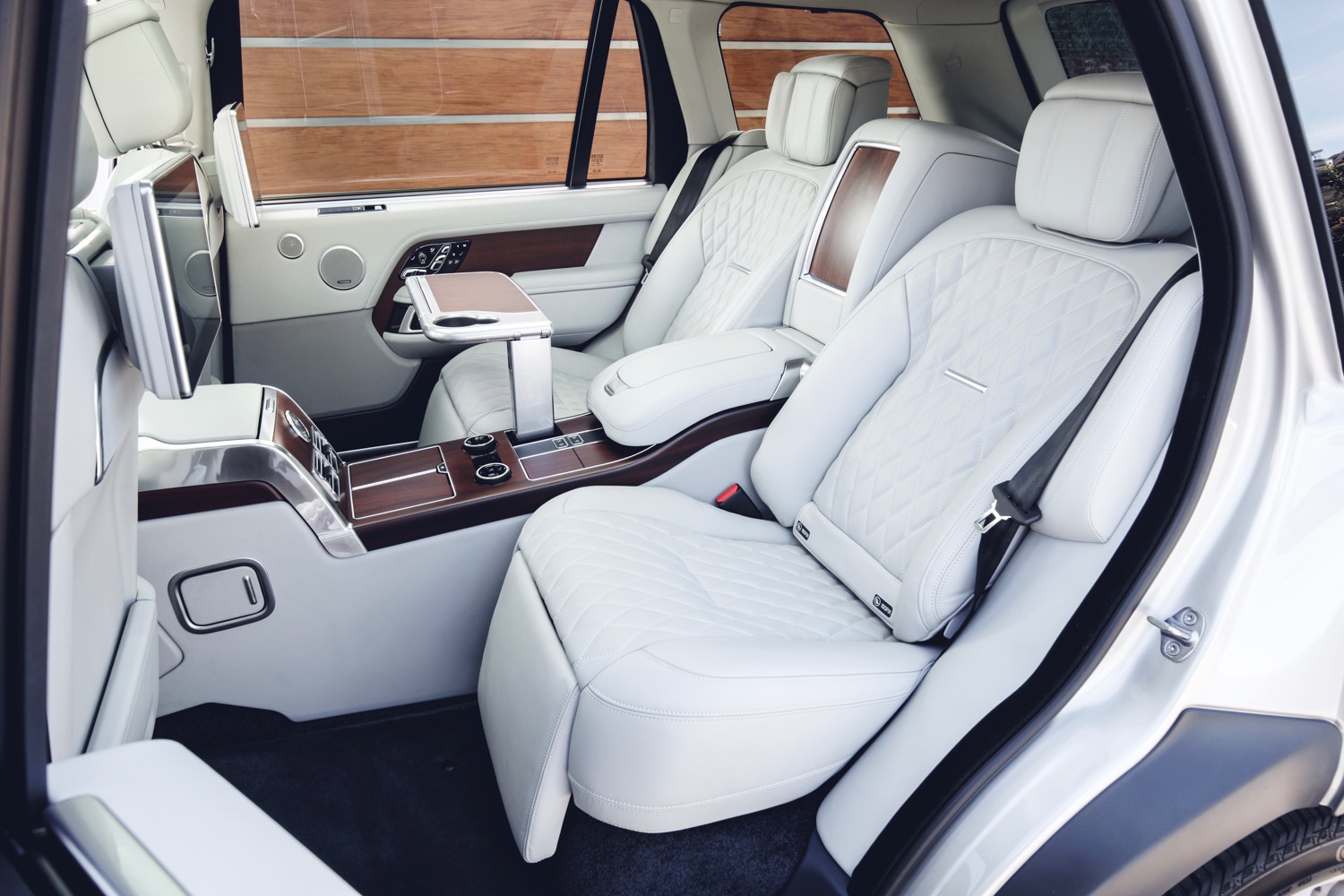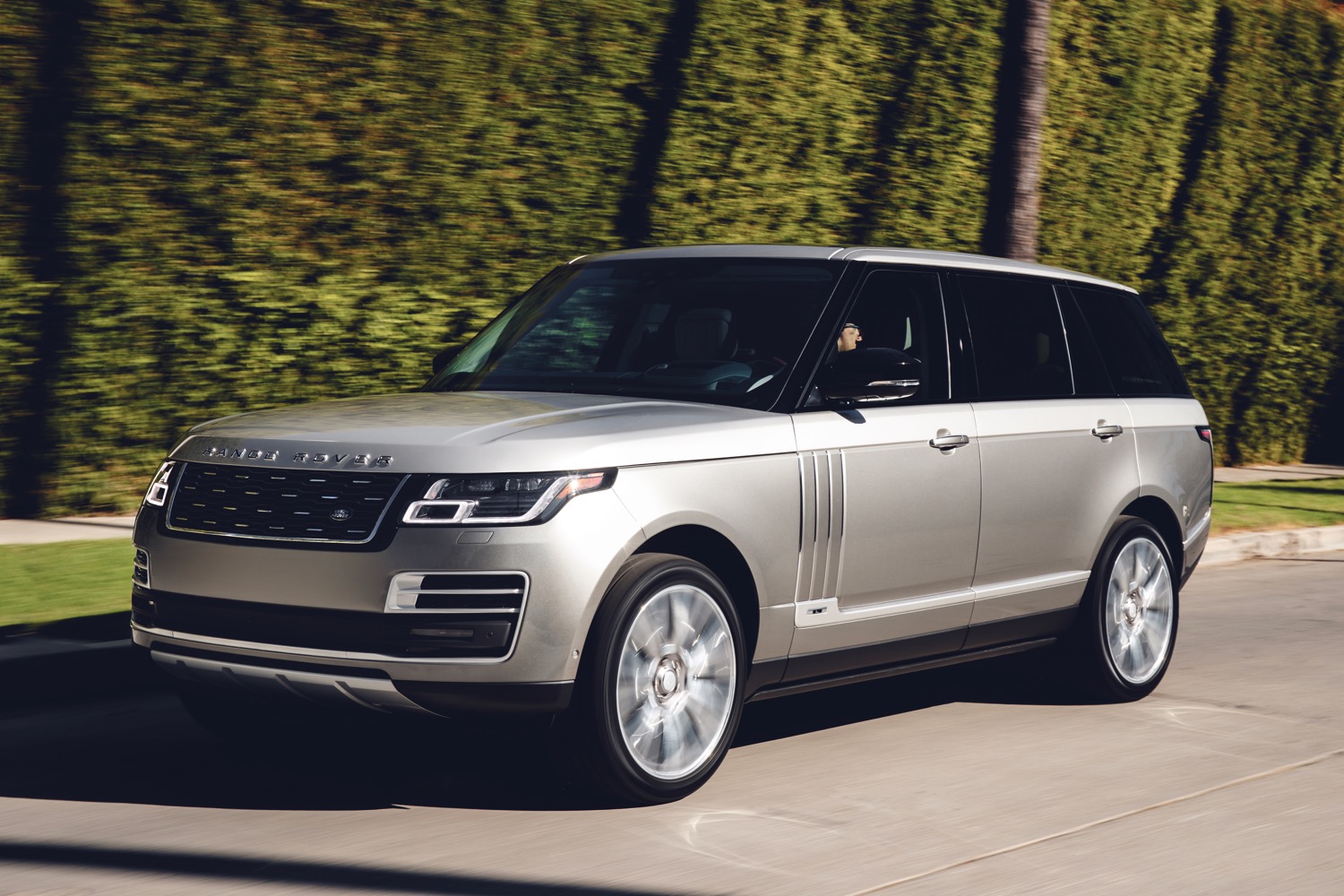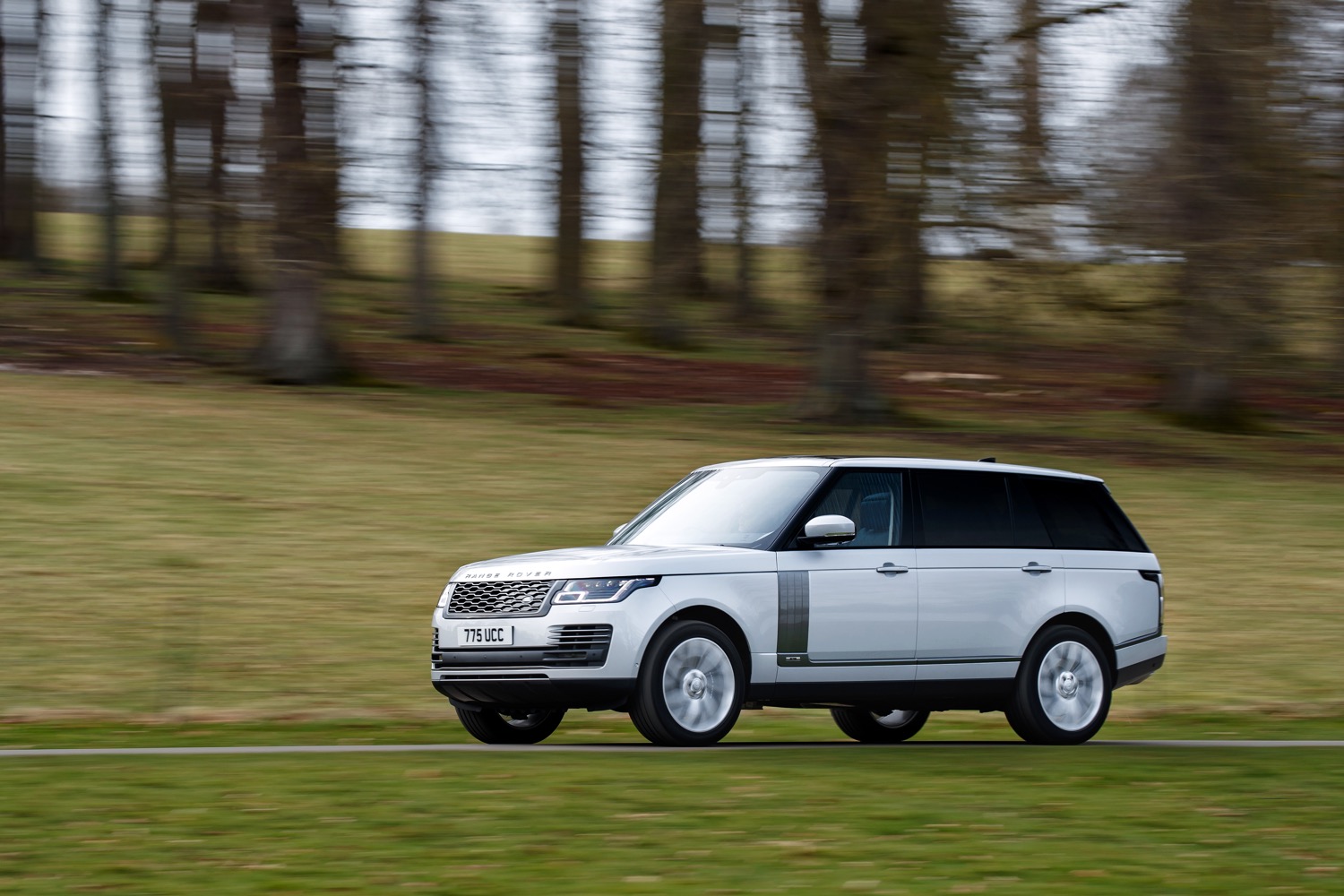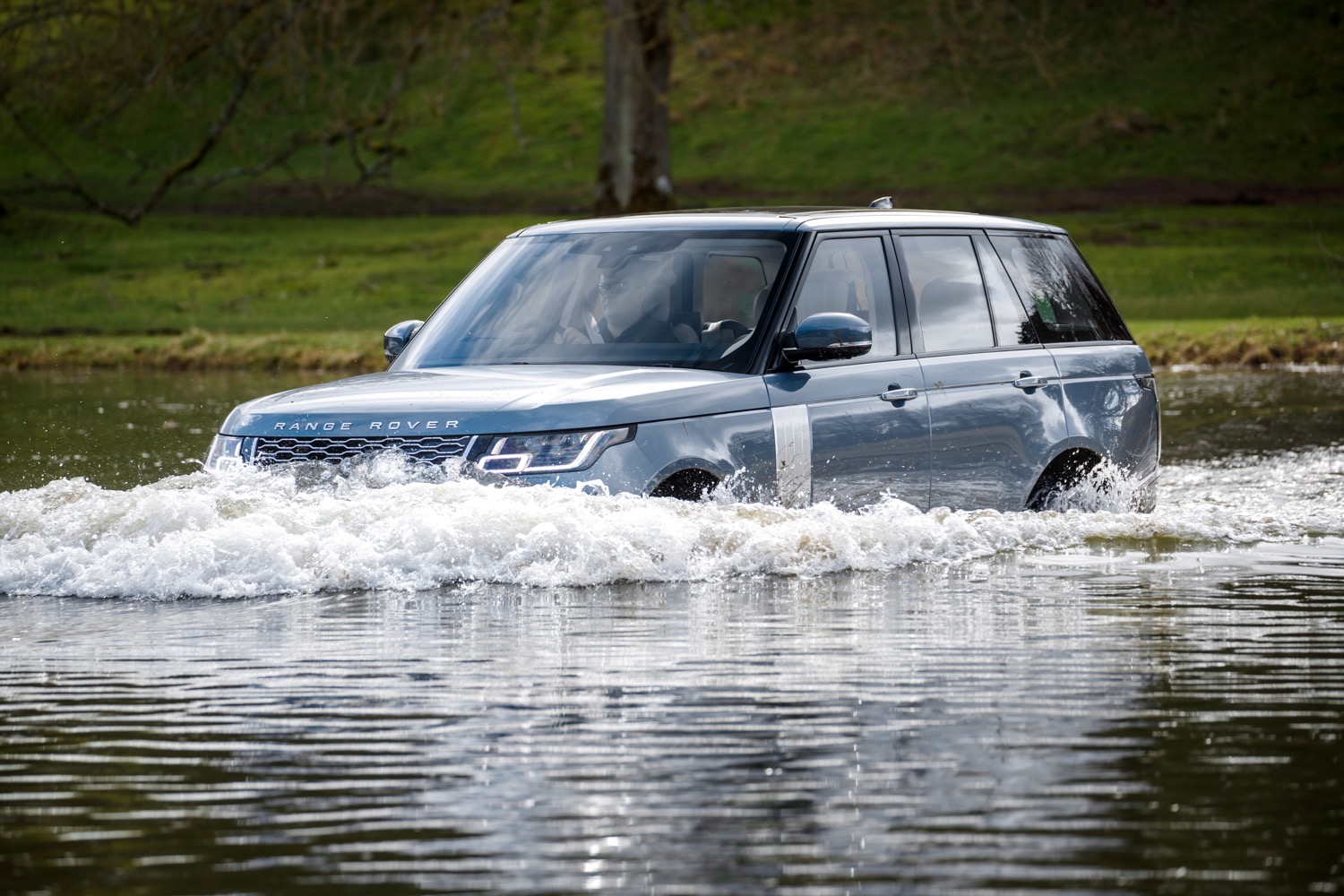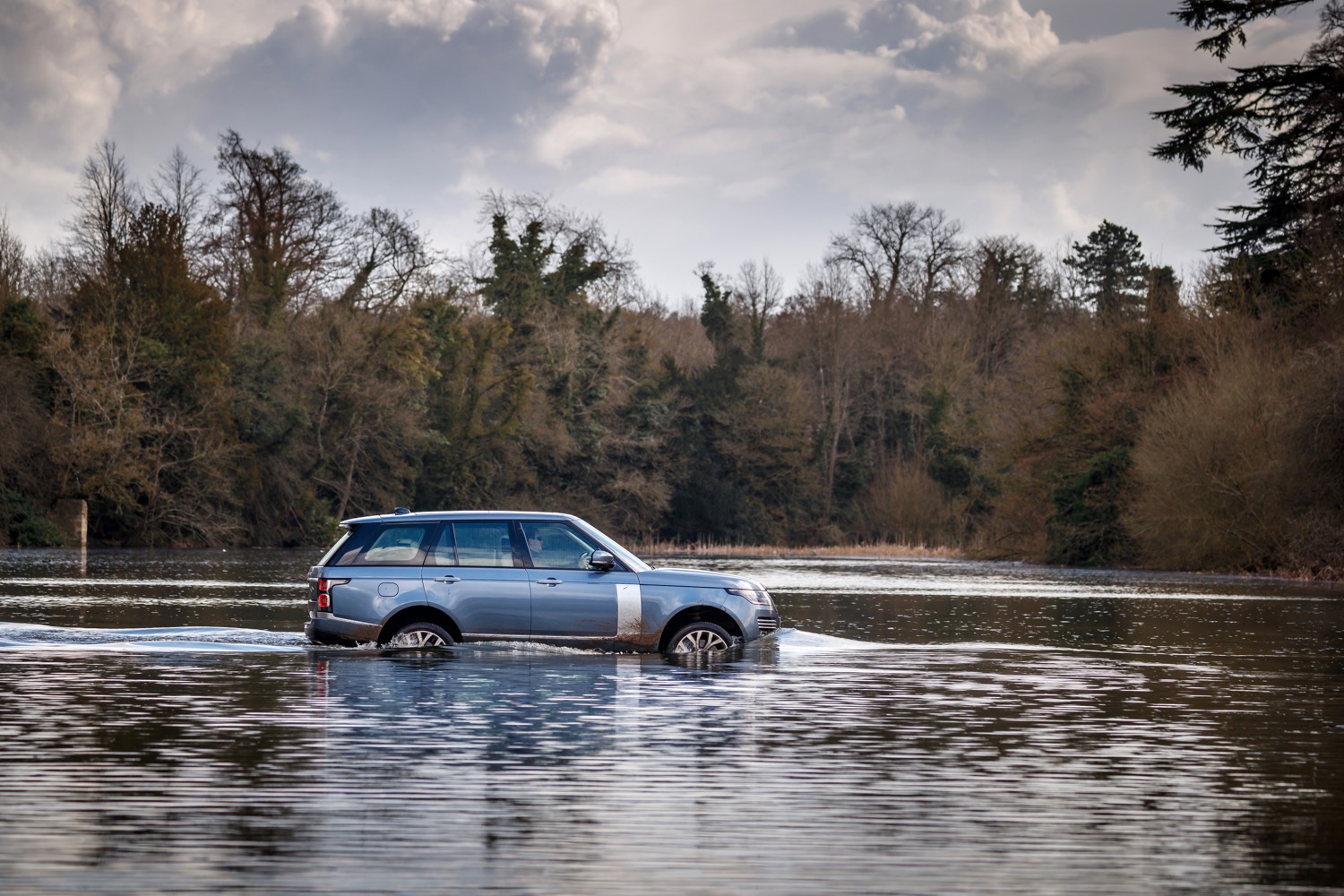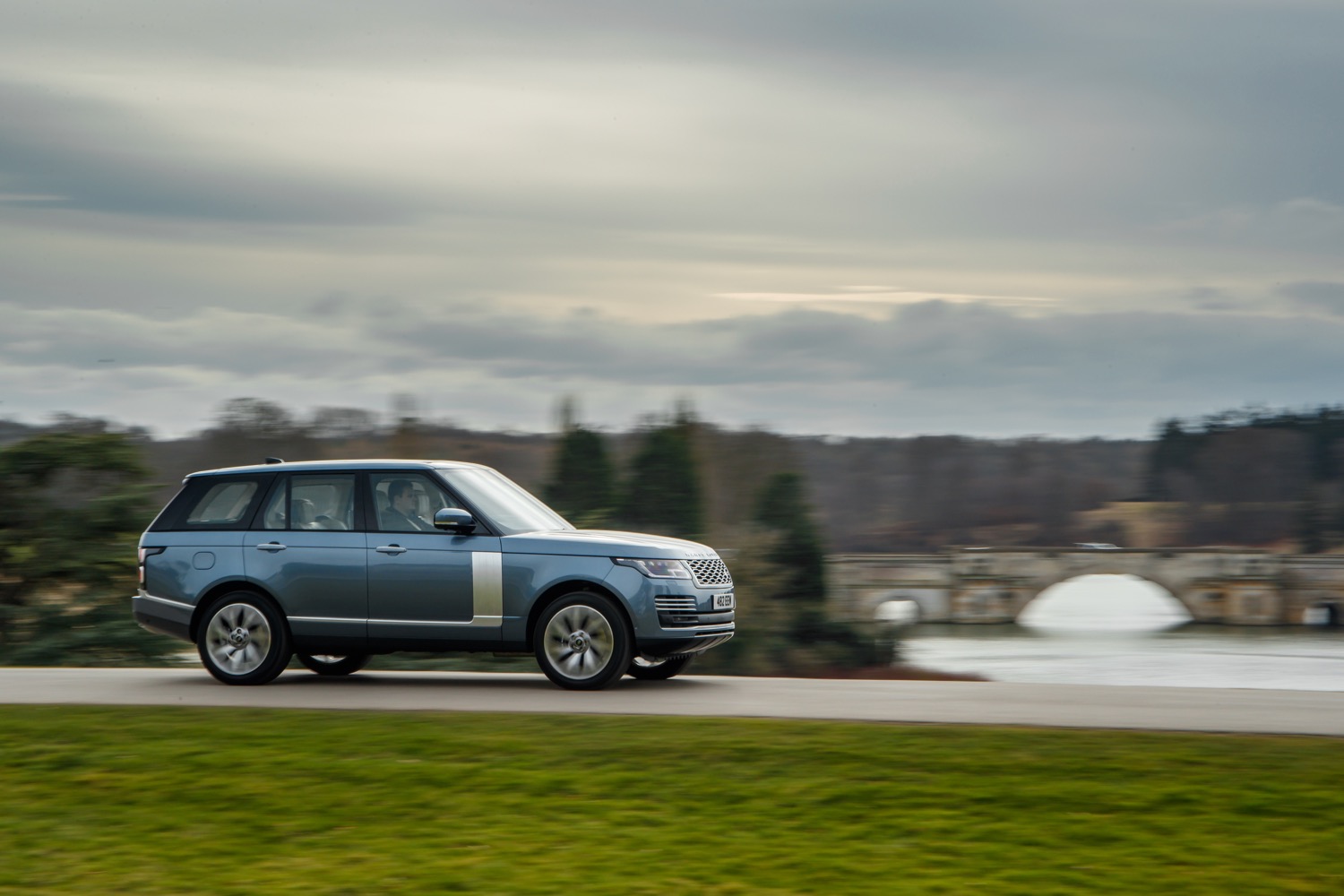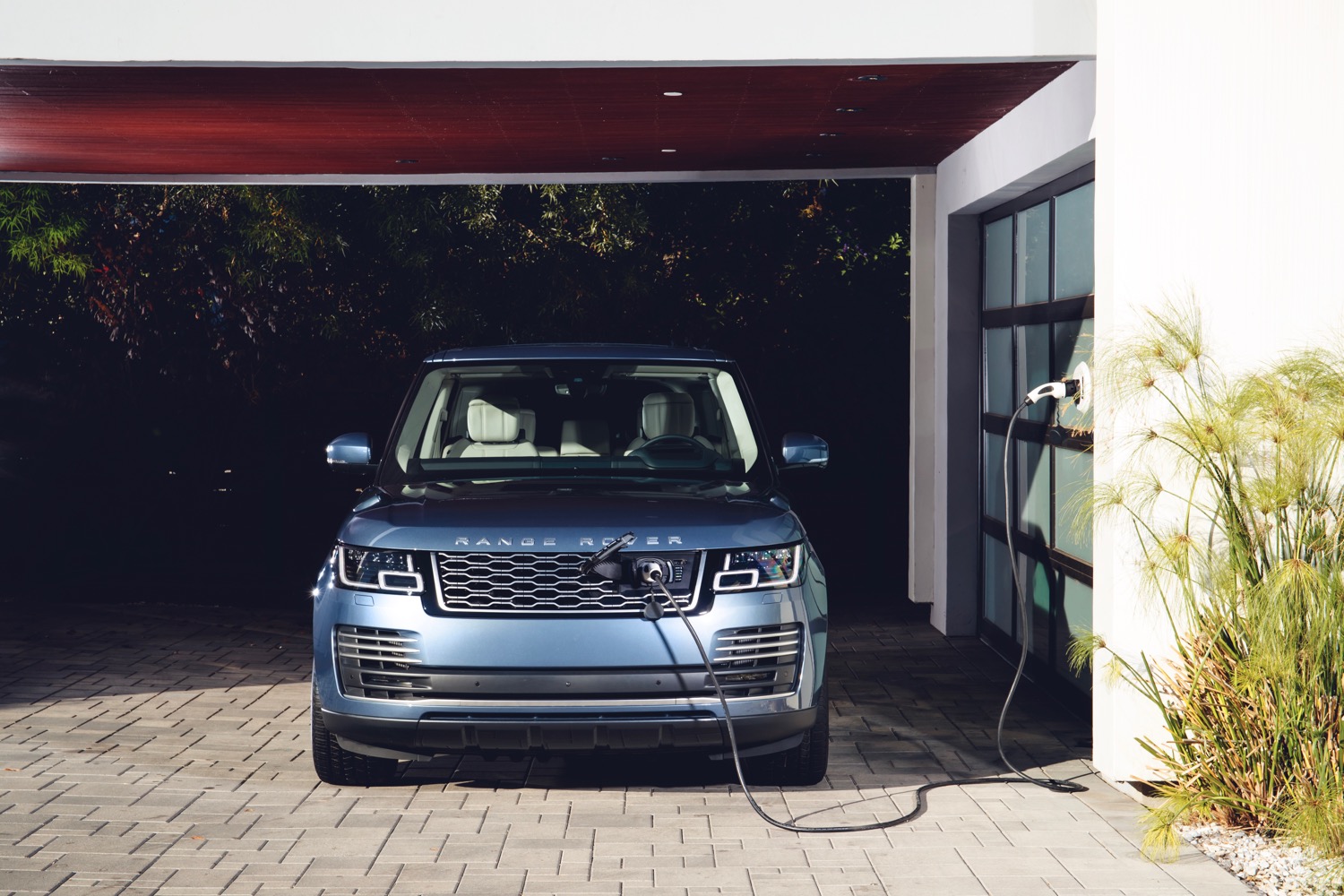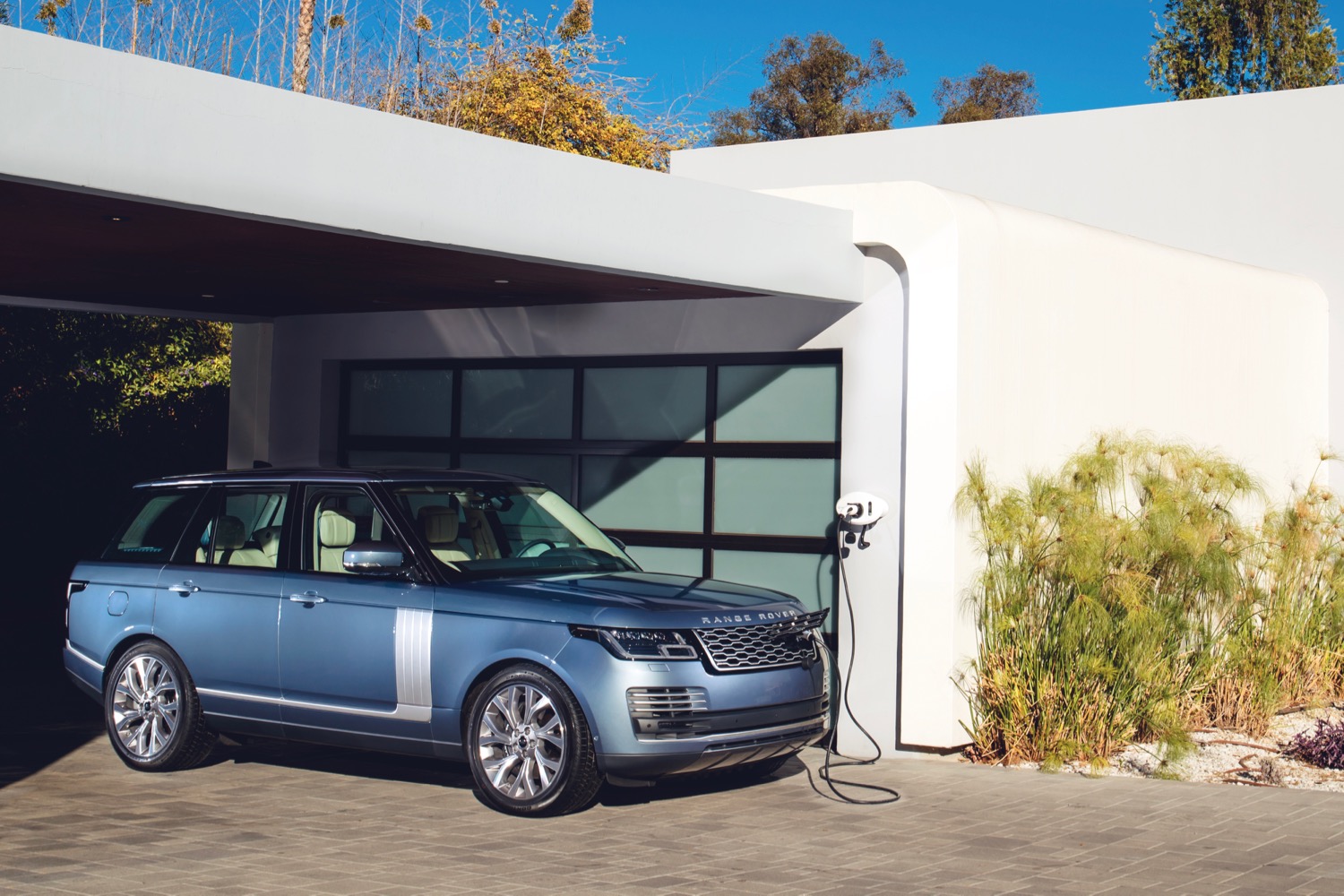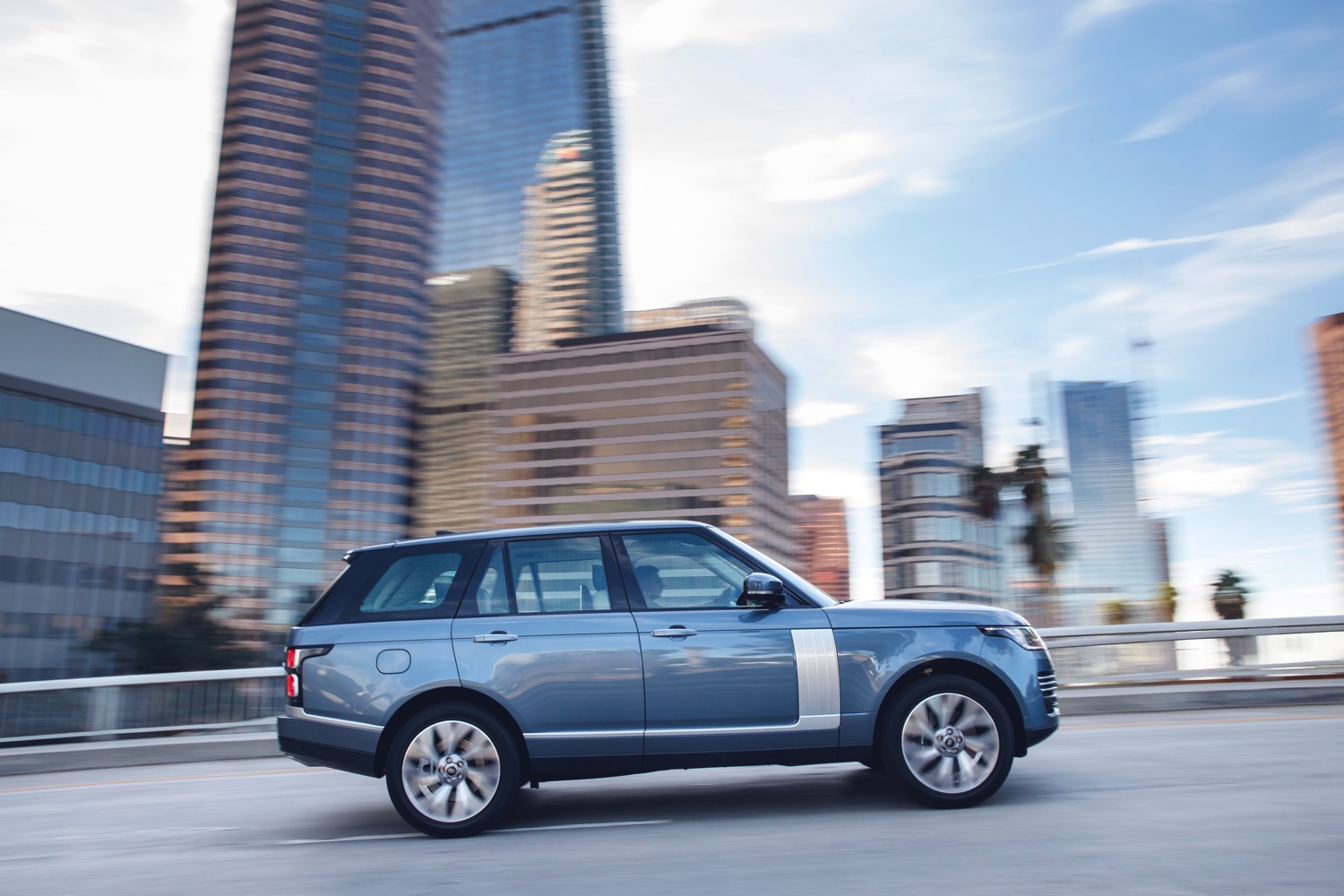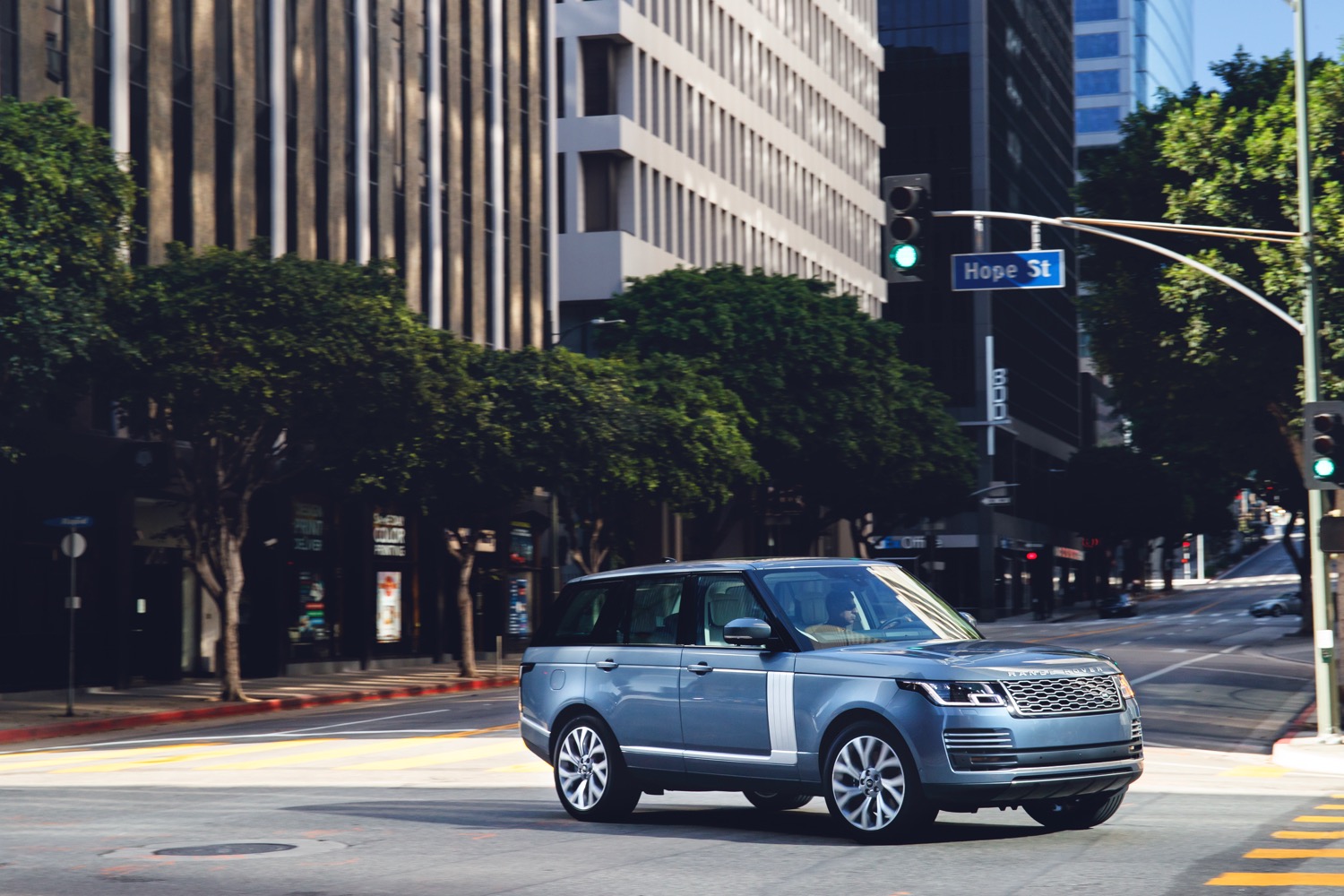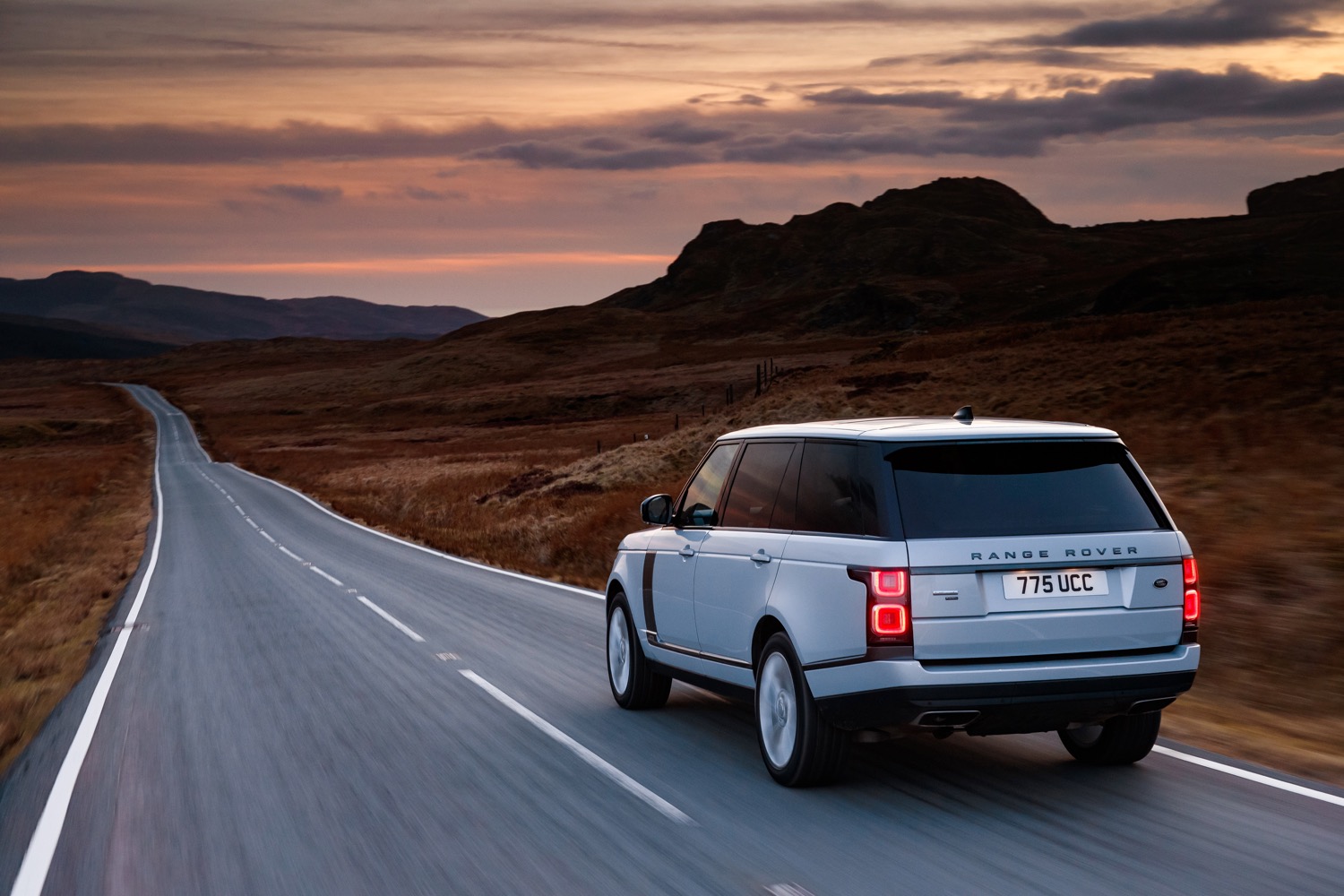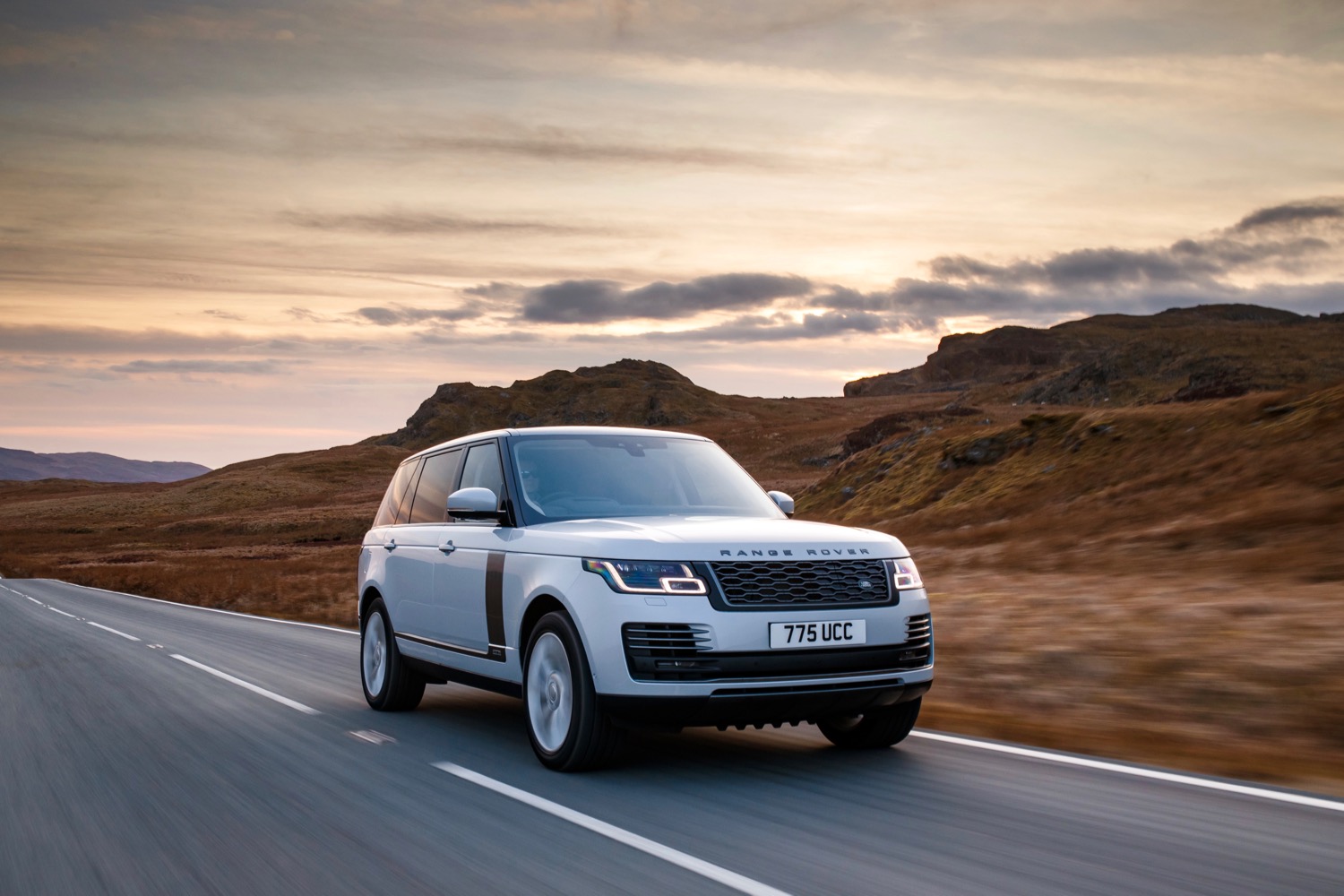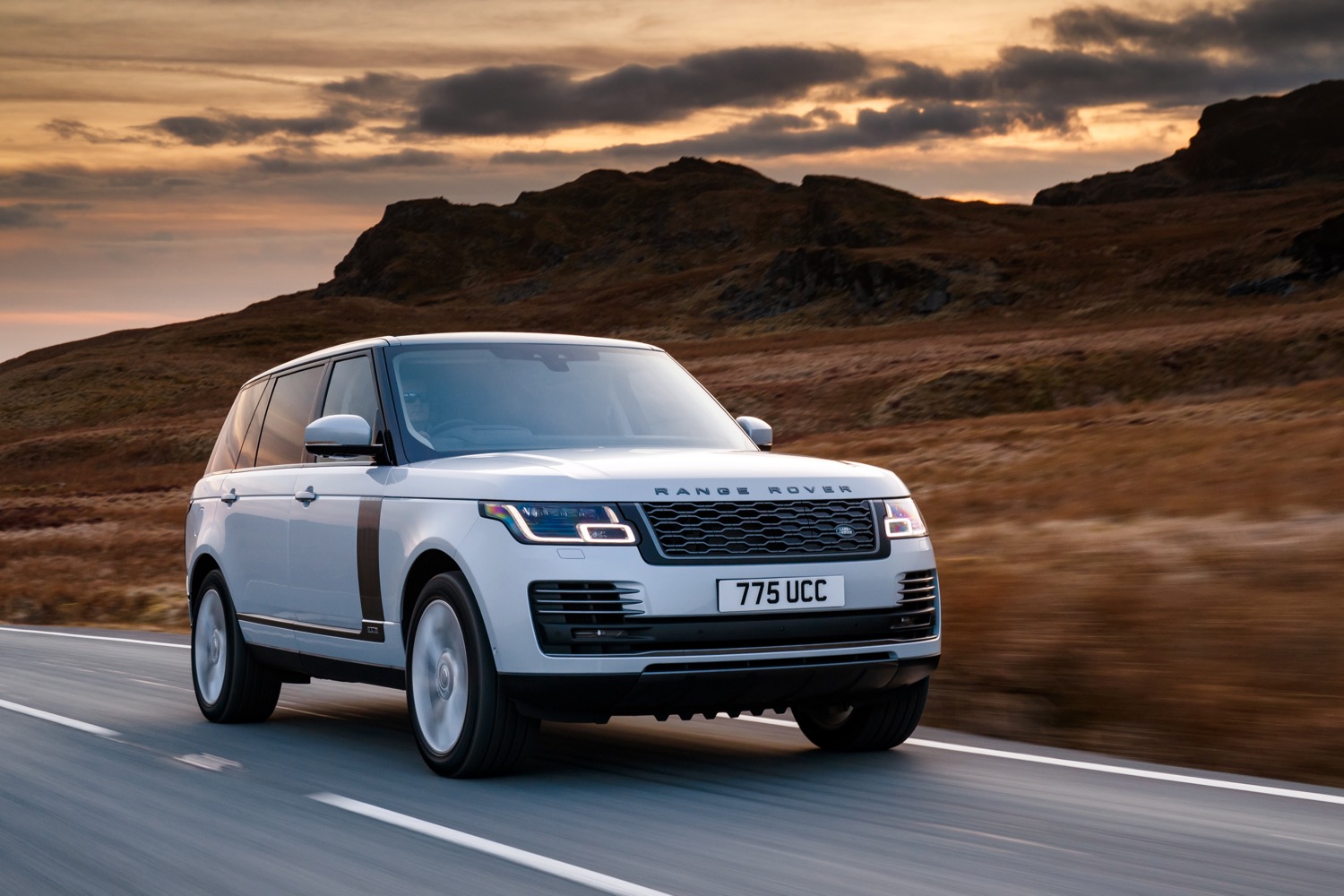In almost 50 years of production, Land Rover’s Range Rover has evolved from a barely civilized truck into a luxury status symbol to rival the likes of the Mercedes-Benz S-Class. That evolution continues at a gradual pace for the 2019 model year, as Land Rover makes some small tweaks to its flagship.
The biggest news for the 2019 Land Rover Range Rover is the addition of a P400e plug-in hybrid model to the lineup. Announced last year, the P400e is part of Land Rover and sibling brand Jaguar’s plan to offer a hybrid or all-electric powertrain in every model they sell.
The Range Rover powertrain combines a 2.0-liter turbocharged gasoline engine and electric motor, powered by a 13.1-kilowatt-hour lithium-ion battery pack mounted beneath the trunk floor. Total system output is 398 horsepower and 472 pound-feet of torque. Land Rover estimates a respectable 0 to 60 mph time of 6.4 seconds, top speed of 137 mph, and range of 31 miles on electric power. The automaker even claims the electric motor’s instantly available torque comes in handy off road.
The rest of the Range Rover powertrain lineup is unchanged. Land Rover continues to offer a 3.0-liter supercharged V6 in 340 hp or 380 hp configurations, a 3.0-liter, 254-hp turbodiesel V6, and a 5.0-liter supercharged V8 producing 518 hp. The V8 can propel short-wheelbase versions of the Range Rover from 0 to 60 mph in a sports-car-quick 5.1 seconds, according to Land Rover.
Land Rover also added a Wade Sensing system that provides water-depth readings to the driver in real time, using sensors on the undersides of the exterior mirrors. It can warn the driver if the Range Rover is exceeding its maximum wading depth (35.4 inches, in case you were wondering), end estimate whether water is getting deeper or shallower. We’re not sure how many people regularly dunk their Range Rovers, but it’s nice to know this SUV can handle it.
The 2019 Range Rover also gets a new optional Driver Assist Pack with adaptive cruise control and steering assist, features already available on a number of other vehicles. Other carryover driver aids include autonomous emergency braking, blind spot monitoring, lane keep assist, traffic sign recognition, a driver condition monitor, and a suite of park-assist features, including a 360-degree camera system.
The Range Rover continues to use Jaguar Land Rover’s InControl Touch Pro Duo infotainment system, introduced for the 2018 model year. It uses a pair of 10.0-inch touchscreens in the center console, plus a 12.3-inch display screen for the driver, and an optional head-up display. Buyers can spec a 10.0-inch screen for rear-seat passengers as well. Including USB, 12-volt, and HDMI, the Range Rover is available with no less than 17 ports, according to Land Rover. A built-in Wi-Fi hot spot can support up to eight devices.
Pricing for the 2019 Land Rover Range Rover starts at $88,860 for a base model with the 340-hp gasoline V6, and climbs to $207,900 for a range-topping SVAutobiography long-wheelbase model. The new-for-2019 P400e plug-in hybrid sits somewhere in the middle, at $95,150. To celebrate its 70th anniversary, Land Rover will also build 999 Range Rover SV Coupe two-doors, priced at $295,000, with a handful designated for U.S. customers.
Editors' Recommendations
- Car climate controls are better with a knob, but Range Rover does digital right
- Check out this interactive simulator for upcoming Mars rover landing
